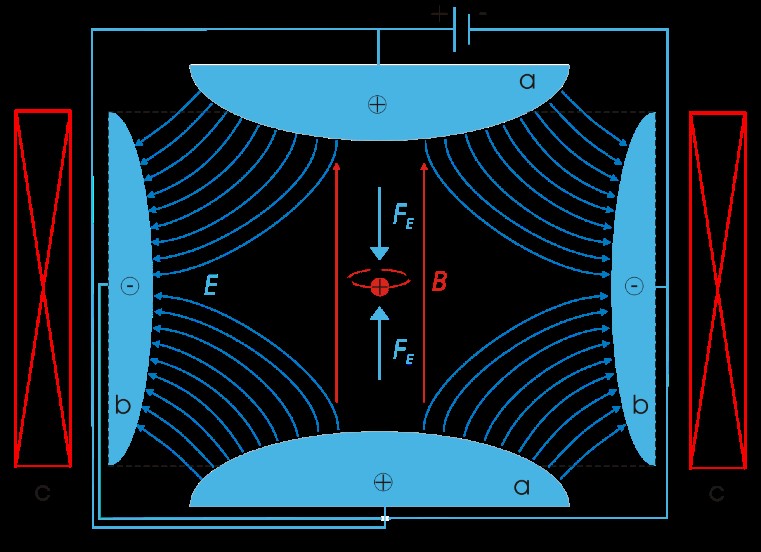
As surprising as it may sound, no one really knows what an electron is, and it is this fundamental question that has been the driving force for much of modern physics and eventually led to the development of quantum field theory.
To answer the question “What is an electron?”, you would think the first step would be to observe it. However, that is easier said than done. Electrons are simply too small for us to observe - the smallest thing we can observe is an atom and even that is not observed with a traditional microscope.
So, we can’t observe an electron, however we can observe its behavior, more specifically its energy. Currently this is done with Penning traps – a special device developed in the 1970’s with the purpose of trapping particles for extensive periods of time so that accurate measurements could be made.
What is important to note is that when we make such a measurement of the energy, we are in fact making a measurement of a single ion i.e. an electron surrounding a central nucleus – not a single electron.
In fact, it was this type of energy measurement that led to the discovery of the electron by J. J. Thompson in 1879. This discovery subsequently ended the idea that the atom was the smallest particle, with Thompson instead suggesting that an atom is composed of electrons surrounded by a soup of positive charge - the plum pudding model.
However, this was later found to be incorrect when Ernest Rutherford carried out his famous gold leaf experiments along with Geiger and Marsden, and concluded that the mass of an atom was concentrated at its center and thus proposed a model with a positive central nucleus surrounded by negatively charged electrons.
This model was further developed with the help of Niels Bohr, but instead of the electrons being randomly distributed he proposed that they existed in orbitals – orbiting the central positive nucleus analogous to planets orbiting a central nucleus/star.
Now with any model we should be able to explain what we are observing. A spectral analysis of hydrogen reveals a set of discrete emission lines which the Bohr model explains as the transition of electrons between orbitals. However, the Bohr model is only able to explain the emission spectra for hydrogen or other single electron atoms like ionized helium.
For multi-electron atoms the spectral analysis showed many more discrete emission lines that could not be explained by the Bohr model.
This is where the quantum model took over, where, instead of existing in precisely-defined orbits, all that is known about electrons is their probable distribution around the atom – generally referred to as an electron cloud. The electron cloud model was developed in 1926 by Erwin Schrödinger and Werner Heisenberg and can be explained in terms of a probability wave – specifically the Schrodinger wave equation – where the states or ‘orbitals’ that an electron can occupy in an atom is analogous to that of a standing wave.
In the quantum model these states, or orbitals depend on a set of quantum numbers for example the principle quantum number n, the angular momentum number l, the magnetic number m, and the spin number s. It is these different quantum numbers that define the position and momentum of an electron in terms of a probability cloud and describe the emission lines that were unaccounted for in the Bohr model.